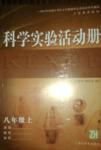题目内容
Today about 70 countries use Daylight Saving Time (DST). Daylight Saving was first introduced during World War I in Australia. During the world wars, DST was used for the late summers beginning January 1917 and 1942, and the full summers beginning September 1942 and 1943.
In 1967, Tasmania experienced a drought(干旱). The State Government introduced one hour of daylight saving that summer as a way of saving power and water. Tasmanians liked the idea of daylight saving and the Tasmanian Government has declared daylight saving each summer since 1968. Persuaded by the Tasmanian Government, all states except two passed a law in 1971, for a test use of daylight saving. In 1972, New South Wales, South Australia and Victoria joined Tasmania for regular daylight saving, but Queensland did not do so until 1989.
Tasmania, Queensland and South Australia have had irregular plans, often changing their dates due to politics or festivals(节日). For example, in 1992, Tasmania extended(延长)daylight saving by an extra month while South Australia began extending daylight saving by two weeks for the Adelaide Festival. Special daylight saving plans were made during the Sydney 2000 Olympic Games.
The differences in daylight saving in Australia continue to cause serious problems in transport and many other social activities. It also reduces the number of hours in the working day that are common to all centers in the country. In particular, time differences along the east coast cause major differences, especially for the broadcasters of national radio and television.
Daylight Saving Time was introduced in Tasmania _______________.
A. to stop the drought in 1967 B. to support government officials
C. to pass a special law in the state D. to save water and electricity
According to the text, which state was the last to use DST?
A. Victoria. B. Queensland.
C. South Australia. D. New South Wales.
What can we learn about DST in some Australian states?
A. It doesn’t have fixed dates. B. It is not used in festivals.
C. Its plan was changed in 2000. D. It lasts for two weeks.
What do we know about the use of DST from the last paragraph?
A. There exist some undesirable effects. B. It helps little to save energy.
C. It brings about longer working days. D. Radio and TV programs become different.
【小题1】D
【小题2】B
【小题3】A
【小题4】A
解析:
本文介绍了澳大利亚夏时制的情况,为说明文文体。
【小题1】 细节题.。从文章第二段第二句可得出答案。“…as a way of saving power and water.”
【小题2】细节题。从第二段末句“… but Queensland did not do so until 1989.”可知答案。
【小题3】 细节题。从第三段首句可以知道答案。“…have had irregular plans, often changing their dates due to politics or festivals.
【小题4】 段落主旨概括题。本段主要讲述了夏时制不尽如人意的几个方面。答案为A。

 科学实验活动册系列答案
科学实验活动册系列答案